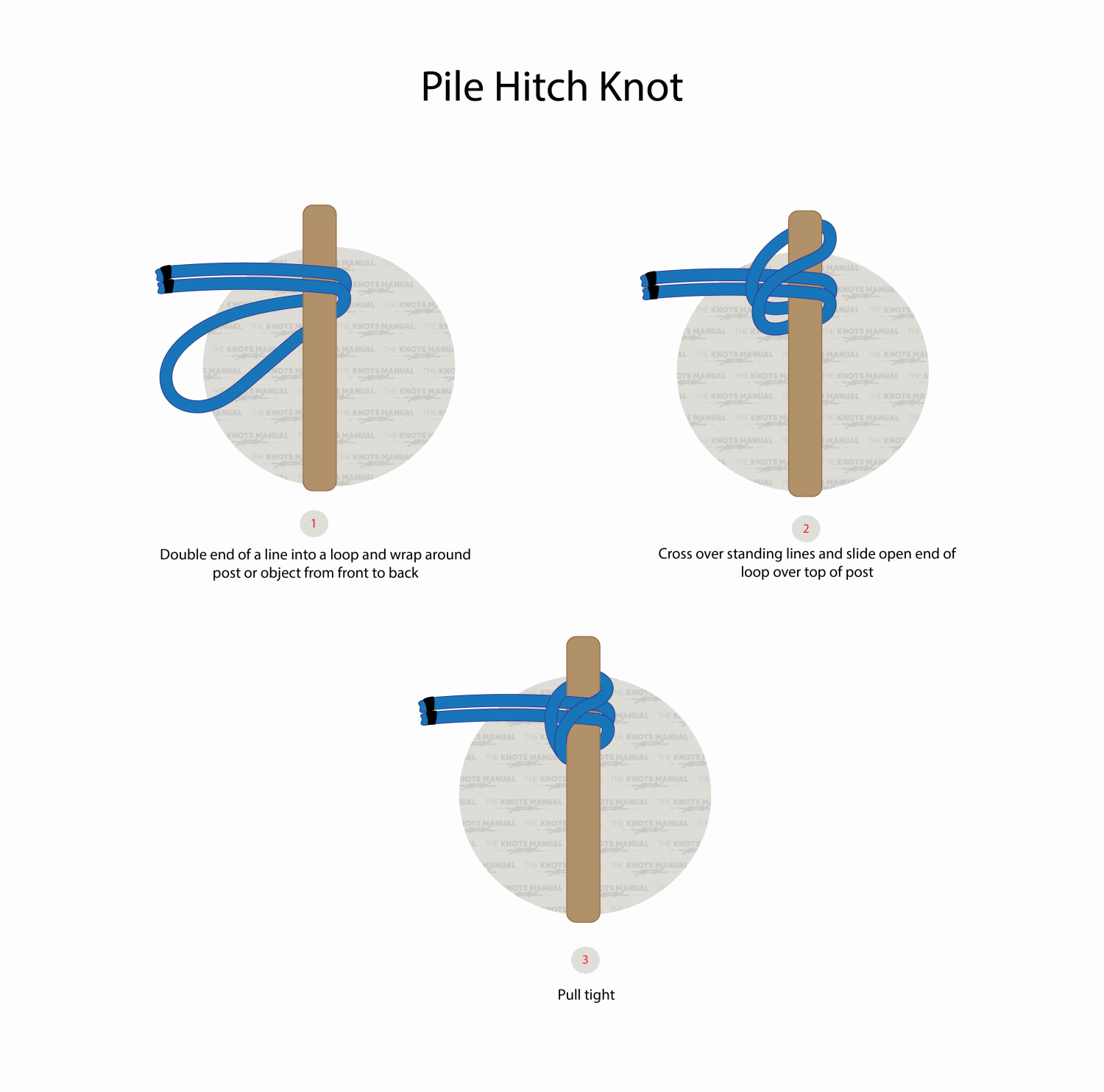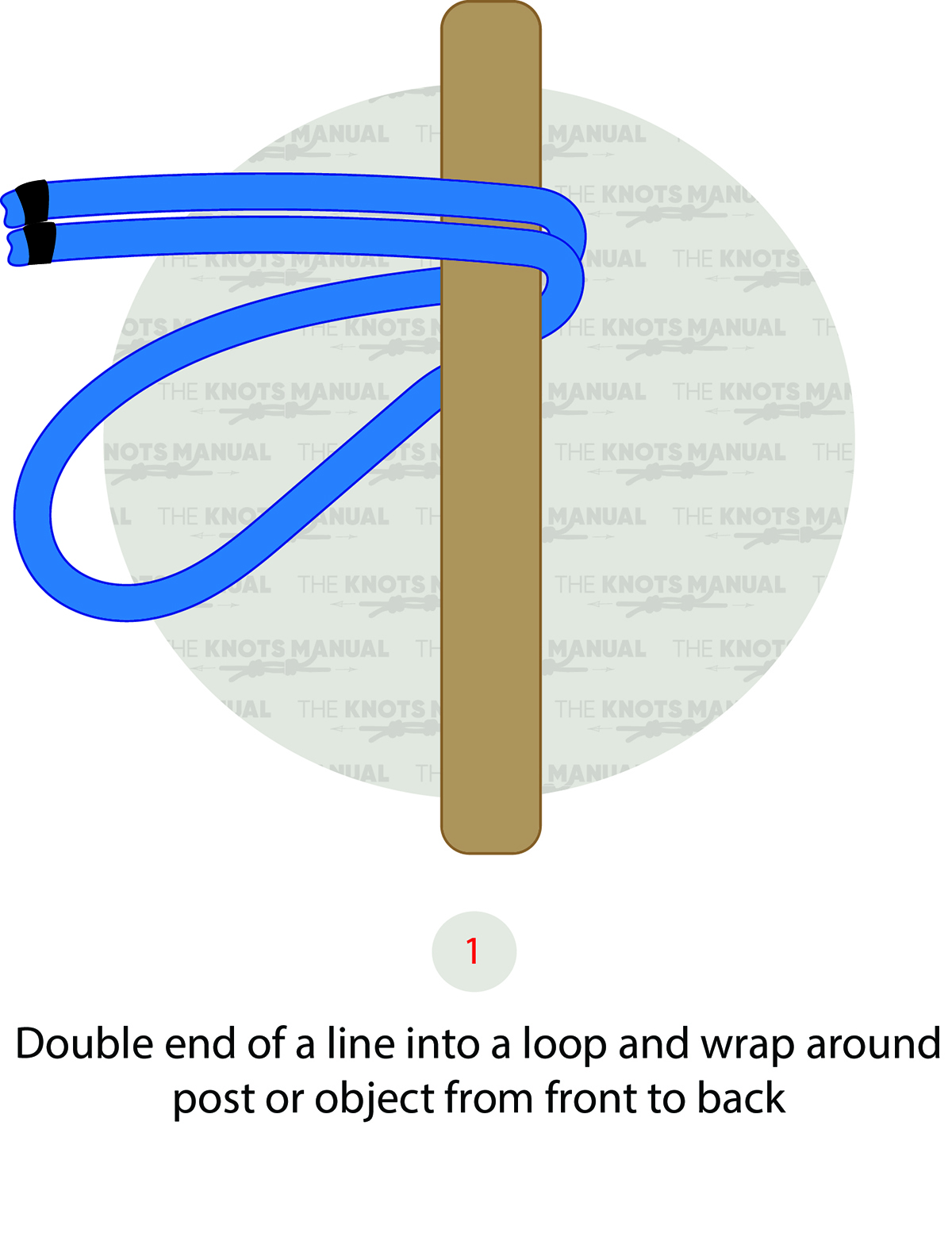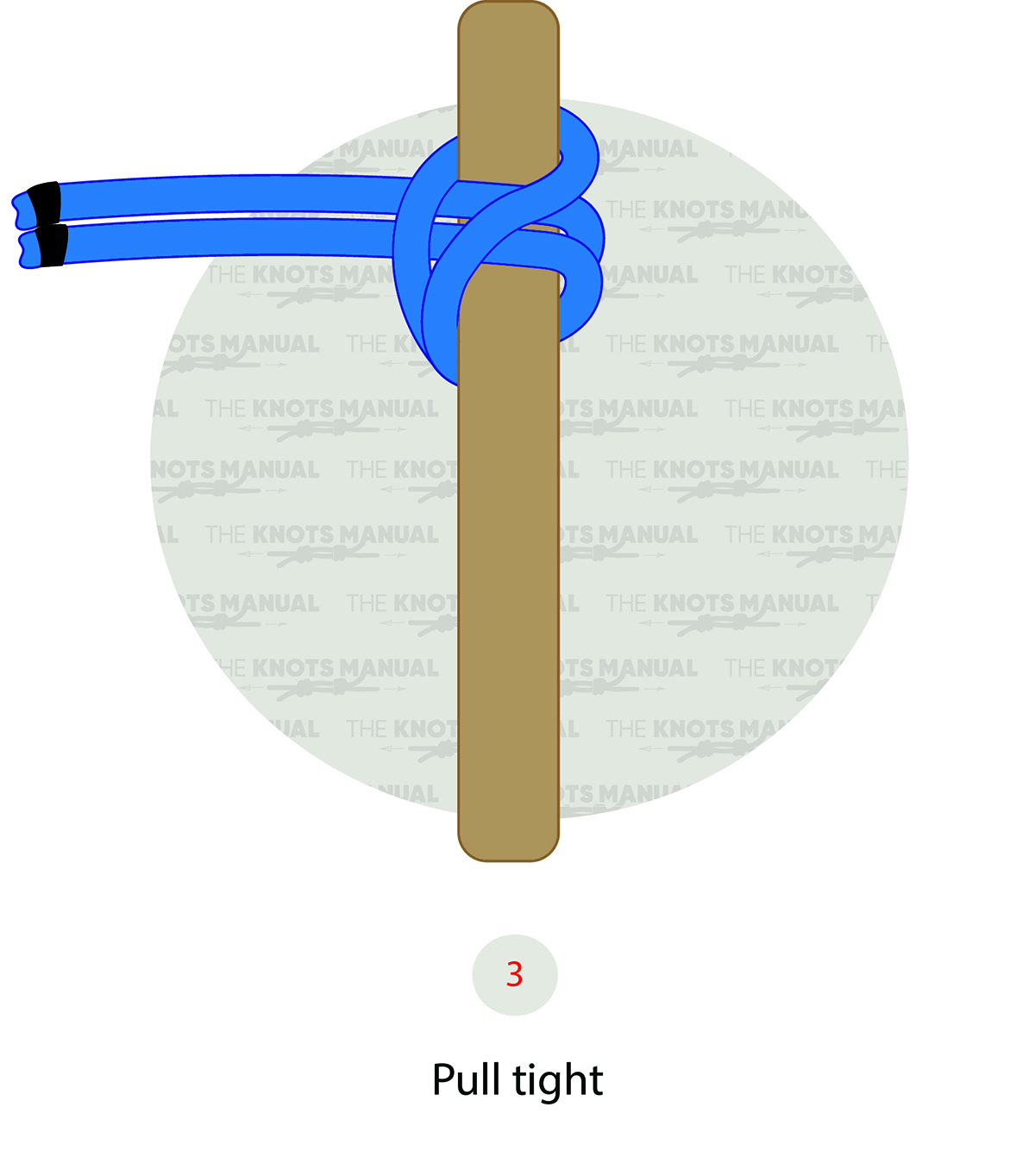A Pile Hitch is a quick and secure hitch knot that’s most commonly used for mooring a boat. It can be tied in the middle of a rope as it doesn’t need access to both rope ends.
Quick Guide: How to Tie a Pile Hitch Knot
To tie a Pile Hitch, create a bight in the middle of a rope. Then wrap it around the post near the free end, go over the standing ends, and place the bight over the post.
You can make the Pile Hitch more secure by wrapping it around the post two or three times.
If you have access to one end of the rope, then you can also tie this knot around a fixed support without free ends. To do this, repeat steps 1-2, only with the working end instead of a bight, and then retrace the knot in the other direction.

Pros and Cons of the Pile Hitch
The Pile Hitch is so useful to know because it’s a very secure and reliable hitch.
It can be tied in the middle of the rope, without needing access to its free ends. This makes it ideal if the ends are already attached to something, like a carabiner or a ring. You can also tie it with closed loops, for example climbing slings and Prusik Loops.
You can pull one end of the rope separately and the other one will stay in place with moderate force. Just don’t pull each strand in critical situations, as it may slip under large enough force. In this case, the other end should be safely secured to another post.
The only disadvantage of the Pile Hitch is that it requires one end of the pole to be completely free to wrap a bight around it.
Common Uses for the Pile Hitch Knot
Most commonly, the Pile Hitch is used for mooring boats. It can be tied very quickly with one hand and provides a secure hitch. But it shouldn’t be used for extended periods. That’s because, under cyclical loads, it comes loose and may slip off the mooring pole. In this case, you should use an Anchor Hitch, Two Half-Hitches, or the Clove Hitch.
The Pile Hitch can also be used to attach to poles, carabiners, rings, shackles, beams, and other fixed objects. It isn’t only used in boating and sailing, but also in climbing, caving, mountaineering, and in other similar applications.
You can also create a simple fence using a long rope and some fixed fence posts. In this case, you can tie a Pile Hitch around each fence post to keep the rope in place.
Knots Like the Pile Hitch
Marlinspike Hitch: This hitch is one of the only alternatives to the Pile Hitch, as it also doesn’t need both ends of the rope to be free. It’s also a very secure hitch but is a bit more difficult to tie.
Two Half-Hitches: A moderately-strong hitch that needs one end of the rope to be free. Often used for mooring boats. It’s much harder to untie as it has a tendency to jam.
Bowline Knot: The Bowline is a strong knot that can also be used to tie around posts. It doesn’t require a free end of the post, but it does need one end of the rope to be free.
Clove Hitch: This hitch has a very similar structure to the Pile Hitch and is even stronger. But it needs one end of the rope to be free.
Buntline Hitch: This hitch is so useful because it’s strong and it tightens as you pull it. It’s also very commonly used in sailing and boating.
Girth Hitch: A Girth Hitch is tied very similarly to the Pile Hitch, except with fixed loops.
Anchor Hitch: If you have access to one end of the rope, then the Anchor Hitch provides a very secure way of attaching to a fixed object, like a post or an anchor.
Illustrated Guide: How to Tie a Pile Hitch

How to tie a Pile Hitch – detailed guide.
Step 1:

Create a bight in the middle of the rope and wrap it around the support near the free end.
Step 2:

Cross over the standing ends and place the bight over the free end of the support.
Step 3:

Pull the standing ends to tighten the Pile Hitch knot. It’s advisable to lower the knot before tightening it to reduce the chances of it slipping off.
